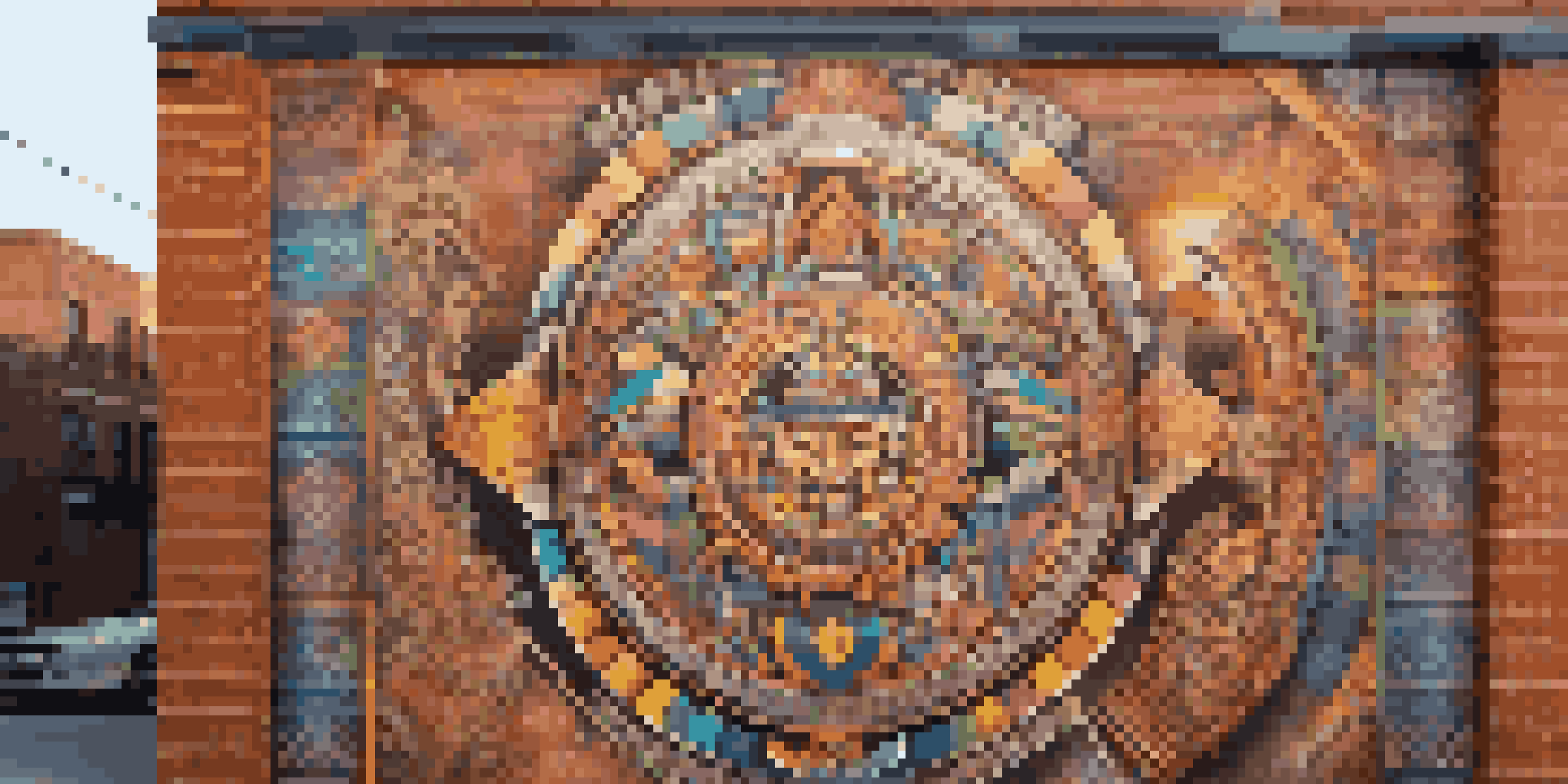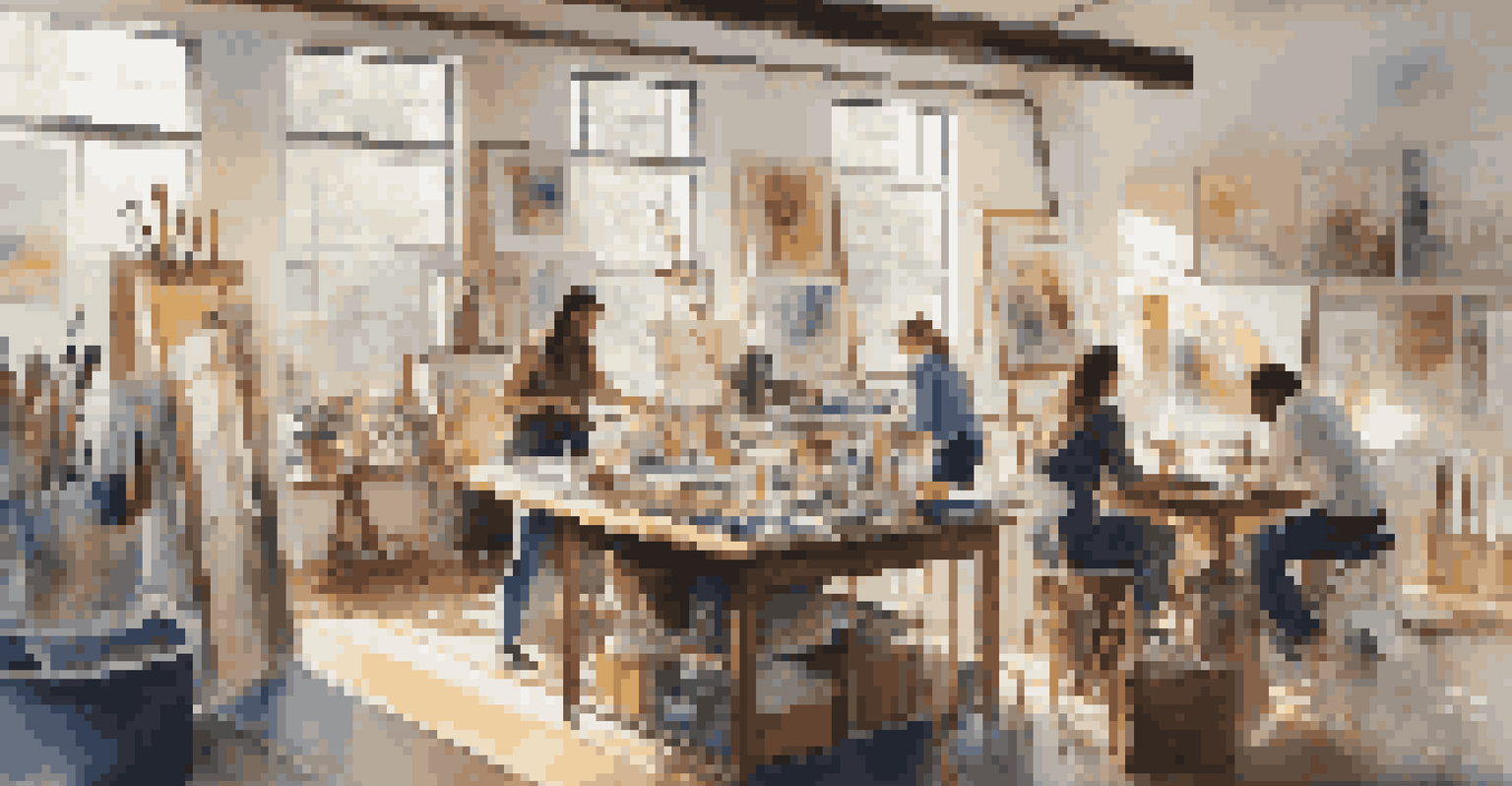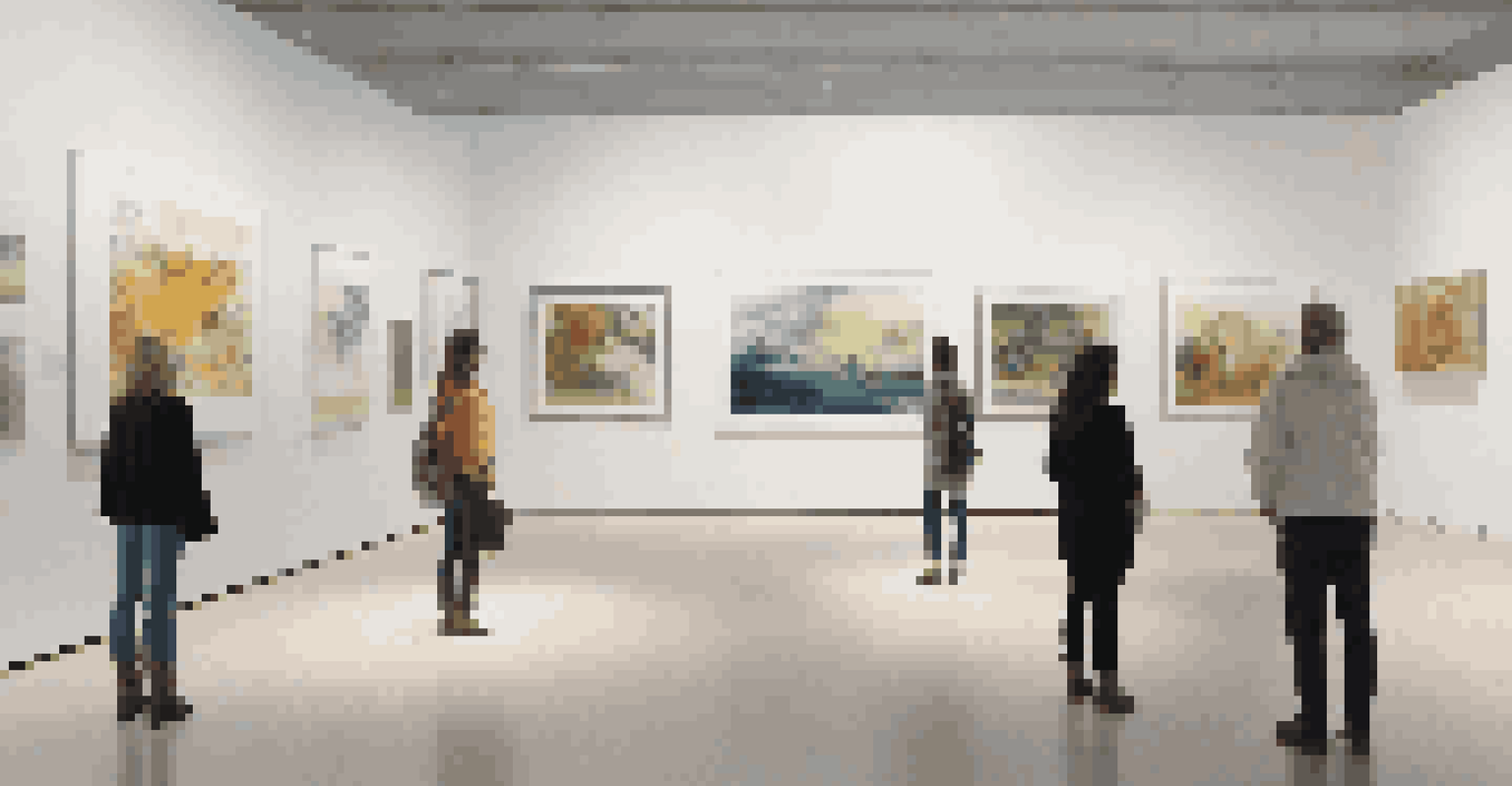Global Art Collectives: A Cultural Exchange Journey

Understanding Global Art Collectives and Their Impact
Global art collectives bring together artists from diverse backgrounds, allowing them to collaborate and share their unique perspectives. These groups often transcend geographical boundaries, fostering a sense of community and cultural exchange among members. By pooling their resources and talents, artists can create works that reflect a rich tapestry of influences and experiences.
Art is not freedom from discipline, but disciplined freedom.
For instance, the 'Upstate Art Weekend' in New York showcases how local and international artists can come together to create a vibrant dialogue. This collaborative spirit not only enhances individual creativity but also raises awareness of global issues through art. As artists share their stories, they build bridges that connect different cultures and promote understanding.
In essence, global art collectives serve as incubators for innovation, encouraging artists to explore new ideas while remaining rooted in their cultural backgrounds. This blend of tradition and modernity results in artworks that resonate with a wider audience, ultimately enriching the global artistic landscape.
The Role of Digital Platforms in Artistic Collaboration
In today's digital age, online platforms have revolutionized how artists connect and collaborate. Websites like Instagram and Behance allow artists from around the world to showcase their work, find inspiration, and engage with one another. This access to a global audience fosters a sense of belonging and encourages the exchange of ideas across cultures.

For example, during the pandemic, many art collectives turned to virtual exhibitions and online workshops to maintain their collaborative spirit. These digital events not only reached a broader audience but also provided artists with an opportunity to share their work in innovative ways. This shift has demonstrated that geography is no longer a barrier to collaboration.
Art Collectives Foster Cultural Exchange
Global art collectives enable artists to share traditions and techniques, enriching their practices and promoting understanding among diverse cultures.
By embracing technology, global art collectives can create more inclusive spaces for dialogue and artistic expression. This adaptability ensures that art remains a powerful medium for cultural exchange, even in challenging circumstances.
Cultural Exchange: Learning Through Shared Experiences
One of the most beautiful aspects of global art collectives is the cultural exchange that occurs among members. Artists often learn from each other's traditions, techniques, and storytelling methods, enriching their own practices in the process. This sharing of knowledge not only enhances the artists' skills but also promotes a deeper understanding of each other's cultures.
The only way to make sense out of change is to plunge into it, move with it, and join the dance.
For example, a painter from Africa might collaborate with a sculptor from South America, combining their unique styles to create a hybrid artwork. This fusion of cultural elements can lead to the emergence of new art forms that challenge conventional boundaries. Such collaborations highlight the importance of diversity in the creative process.
Ultimately, the cultural exchange fostered by global art collectives helps to break down stereotypes and build empathy among artists and their audiences. By celebrating differences and finding common ground, these collectives contribute to a more interconnected and compassionate world.
Art as a Catalyst for Social Change
Art has long been recognized as a powerful tool for social change, and global art collectives harness this potential to address pressing issues. Many collectives focus on themes such as climate change, social justice, and human rights, using their art to raise awareness and inspire action. By amplifying underrepresented voices, they can shed light on critical global challenges.
For instance, the collective 'Artivism' uses art as a platform to engage communities in discussions about environmental sustainability. Through exhibitions and workshops, they encourage artists to reflect on their role in society and inspire others to take action. This approach not only elevates the conversation but also empowers artists to make a difference.
Digital Platforms Boost Collaboration
Online platforms facilitate connections among artists worldwide, allowing for innovative collaborations that transcend geographical barriers.
By aligning their creative practices with social causes, global art collectives demonstrate that art can be more than just aesthetic; it can be a vehicle for change. This intersection of art and activism illustrates the profound impact that a united artistic community can have on the world.
The Influence of Local Cultures on Global Art Movements
While global art collectives promote cross-cultural collaboration, they also highlight the significance of local cultures in shaping artistic practices. Each artist brings their own cultural heritage to the table, which can influence the collective's overall identity and direction. This interplay between local and global perspectives enriches the artistic dialogue and results in unique, hybrid art forms.
Consider the 'Global Street Art Collective,' which showcases street artists from different countries. Each artist's work is deeply rooted in their local context, yet when combined, the collection creates a powerful commentary on global issues. This synergy allows for a richer understanding of how local cultures can contribute to broader artistic movements.
In this way, global art collectives serve as a reminder that while we may come from different backgrounds, our shared experiences and stories can create something truly extraordinary. This celebration of local culture within a global framework is essential for fostering creativity and innovation.
Challenges Faced by Global Art Collectives
Despite their many benefits, global art collectives also face significant challenges. One major issue is the varying access to resources among artists from different regions. While some may have access to funding and technology, others may struggle to gain visibility or support, creating disparities within the collective.
Additionally, language barriers can hinder communication and collaboration among artists from diverse backgrounds. Misunderstandings may arise, making it difficult to fully express creative ideas. Overcoming these obstacles requires intentional effort and a commitment to inclusivity within the collective.
Art as a Tool for Social Change
Global art collectives use their creative expression to address critical social issues, amplifying underrepresented voices and inspiring action.
By acknowledging these challenges and working to address them, global art collectives can create more equitable environments for all artists. This focus on inclusivity not only strengthens the collective but also enriches the artistic output, ultimately leading to a more vibrant and diverse creative community.
The Future of Global Art Collectives
As we look to the future, global art collectives are poised to play an even more significant role in the world of art. Their ability to adapt to changing circumstances and embrace new technologies will be crucial in expanding their reach and impact. With a growing emphasis on sustainability and social justice, these collectives will likely continue to focus on meaningful themes that resonate with audiences worldwide.
Moreover, as more artists recognize the benefits of collaboration, we can expect to see an increase in the formation of new collectives. This trend will not only diversify the artistic landscape but also encourage the exploration of innovative practices and ideas. The next generation of artists will thrive in environments that celebrate collaboration and cultural exchange.

Ultimately, the future of global art collectives lies in their capacity to unite artists around shared values and visions. By continuing to foster dialogue and creativity, they will contribute to a more interconnected, expressive, and inclusive world of art.